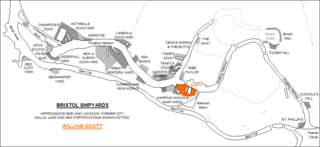Bronze Age and early urban construction methods and features
It was the way of life in the valleys of the streams of the Nile, the Tigris and Euphrates, the Indus, and the Huang Ho-with their concentrated horticulture dependent on water-that created the great urban networks. The earth accessible on the riverbanks was taken advantage of for another building innovation in these urban areas. The pressed earth dividers of before times were supplanted by those developed of pre-assembled units: mud blocks. Using technology now, buiders bristol can make the work easier than it was in ancient times.

Blocks were produced using mud and straw shaped in a four-sided wooden casing, which was eliminated after dissipation had adequately solidified the substance. The blocks were then completely dried in the sun. The straw went about as supporting to hold the block together when the inescapable shrinkage breaks showed up during the drying system. In partitions, wet mud mortar or bitumen was used for consolidation; wooden lintels held open the windows. In the warm, dry environments of the waterway valleys, enduring activity was not a significant issue, and the mud blocks were allowed to be uncovered or covered with a layer of mud mortar. The tops of these early urban buildings have vanished, however, it appears to be logical that they were upheld by wood radiates and were for the most part level since there is little precipitation here. Such mud block or adobe construction is still generally utilized in the Middle East, Africa, Asia, and Latin America.
Afterward, around 3000 BCE in Mesopotamia, the primary terminated blocks showed up. In these societies, artistic earthenware had been created for quite a while, and the process of furnace termination was used on blocks made of similarly colored dirt. Due to their expense in labor and fuel, terminated blocks were utilized at first just in quite a while of more noteworthy wear, like asphalts or the highest points of dividers subject to enduring. They were utilized in buildings as well as to fabricate sewers to empty the wastewater of urban areas. In the tops of these underground, depletes are the primary enduring curves in the block, suggesting that this area might become an essential underlying structure. Corbel vaults and arches made of limestone rubble showed up at about a similar time in Mesopotamian burial places. The two inverse lines meet at the top of the corbel vault when putting stonework lines in such a way that they extend past each other somewhat. Several buildings may have used curves and vaults in their roofs and floors, but they have not been preserved. Mesopotamian stonework innovation was used to build enormous structures of the block, like the sanctuary at Tepe Gawra and the ziggurats at Ur and Borsippa, which were up to 26 meters (87 feet) high. These emblematic buildings denoted the beginnings of engineering in this culture.
The improvement of bronze, and later iron, innovation in this period prompted the creation of metal devices for working wood, like tomahawks and saws. Less exertion was consequently needed to fell and work huge trees. This drove thus to new advancements in building methods; lumbers were cut and molded widely, cut into square posts, sawed into boards, and split into shingles. Log lodge construction showed up in the forested spaces of Europe, and wood outlining turned out to be more refined. Albeit, the uncovered remaining parts are fragmentary, without a doubt significant advances were made in lumber innovation in this period; a portion of the items, like the sawed board and the shingle, are as yet utilized today.

